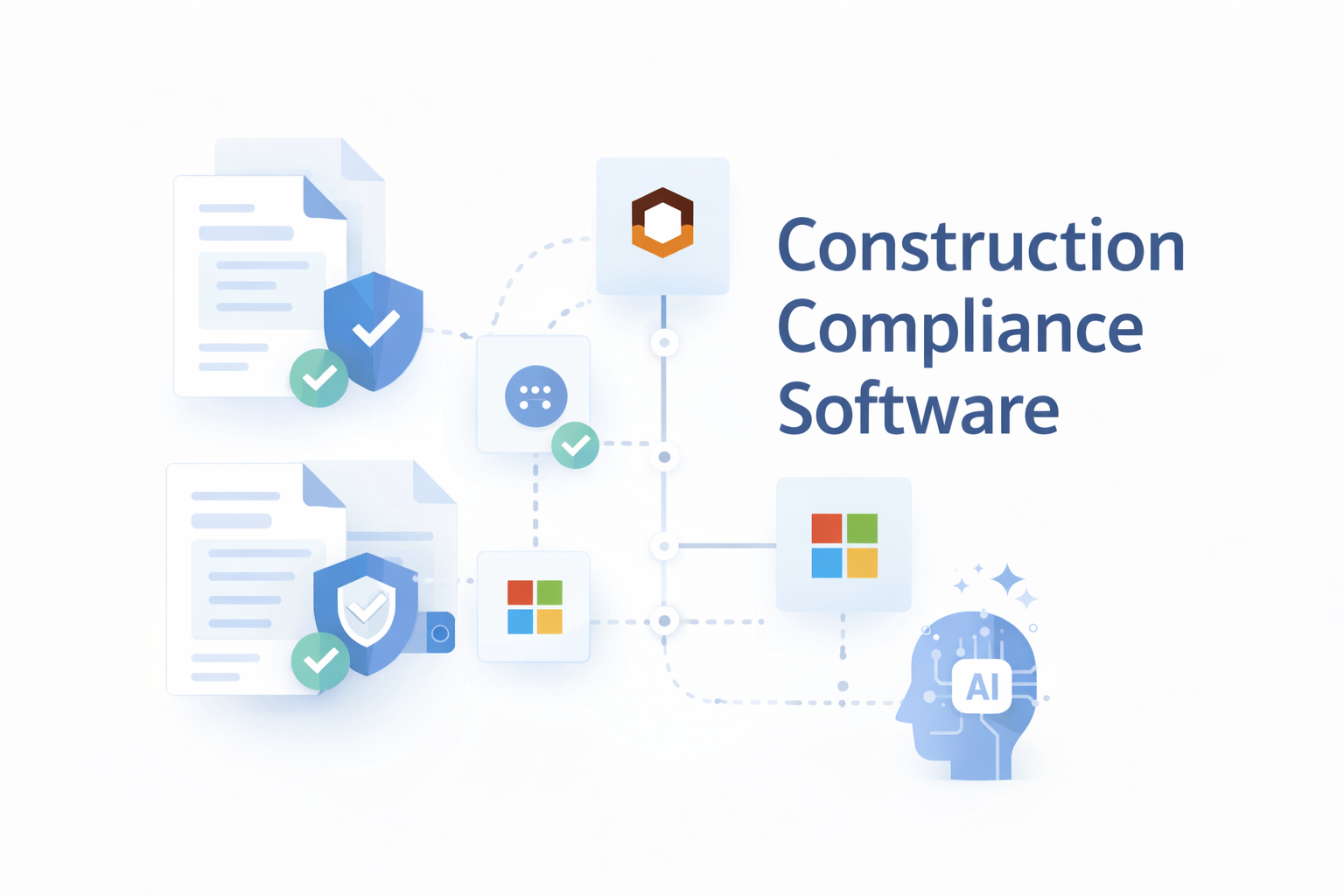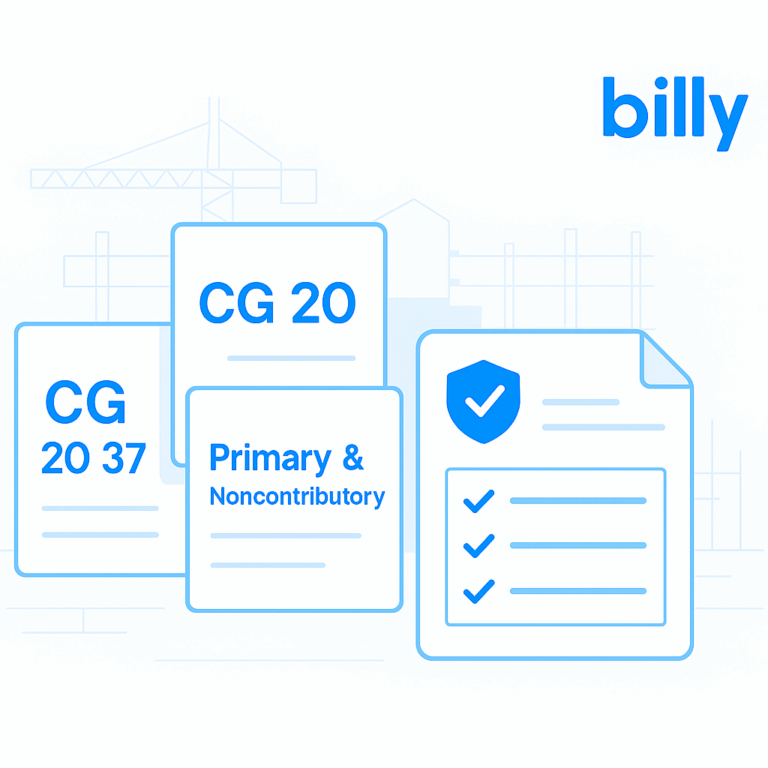Some things in life are so incomprehensibly vast that they’re difficult to wrap our minds around: the universe’s secrets, the power of the human mind, and … construction project documentation? That last one might’ve set off a record scratch, but really, I’m only half kidding. I’ve always been astounded by the diversity, quantity, and complexity of the documents required to run a construction project. In fact, I used to joke that whoever created document management and tracking in construction must hate trees.
Before the explosion of paperless workflow processes, we’d pack 30 to 50 boxes — all housing documents from one project — into a storage unit like sardines. How is it possible to create this much documentation for a single project? Think about the sheer number of people it takes to not only design and plan a project, but also manage the active construction site. You’ve got owners, architects, engineers, subcontractors, suppliers, and more — all of whom generate multiple documents a day, which you must collect, track, and store. And what happens to all that paperwork upon the project’s completion? It starts collecting dust.
Although certain documents can be destroyed after a short period of time, most companies retain records for about a decade (sometimes longer, depending on local laws). Of course, there are good reasons for doing so, namely compliance risk management. In many locations, construction defects can be claimed in lawsuits for up to 10 years after a project’s completion. If you ever find yourself on the receiving end of a lawsuit, you’ll want to be able to review any and all documents related to that work.
All that’s to say, document management and tracking are among the most essential processes in the construction industry. Yet, many companies are still woefully behind the curve when it comes to digital transformation in the construction industry.
Digital Documents: A Panacea?
Given the sheer volume of paperwork that passes through a single construction project, you’d think construction leaders would jump at the opportunity to implement paperless workflow processes to streamline document management and tracking. However, there’s been a long-held resistance to digital transformation in the construction industry. I know companies that still store all their documents on paper, in binders, and in file cabinets.
Widespread technology adoption in the construction industry remains one of its biggest hurdles. To be fair, we’ve seen some advancements over the past few years. One survey found that more than a third of construction workers now use digital documents. Plus, workers themselves seem open to change. Just 7% said they’d resist using digital software solutions that were suitable for their job. Anecdotally, I know this to be true. At a minimum, most general contractors we work with store digital documents in shared drives, servers, or project management tools.
However, it would be naive and dangerous to paint digital file storage as a cure-all for the industry’s document management and tracking challenges. Going paperless is only step one. Without the proper tools and paperless workflow processes, you’ll end up creating new issues, including:
1. Costly chaos.
The more people involved in a project, the harder it is to standardize document naming and storage. Unsurprisingly, things can get disorganized pretty quickly. A single digital document is one thing, but what about an entire email chain of contract negotiations and plan updates?
The problem isn’t a lack of digital — emails originate in the digital space — the problem is organization. When you don’t standardize and implement systems for proper digital file storage, chaos reigns, which will derail your projects and drain your resources.
For example, imagine you’re poised to break ground on a project that’s been stuck in planning limbo for about 18 months. Over that period, you’ve made numerous budget revisions, but due to poor document management and tracking practices, the lender’s wires got crossed somewhere along the way. As you’re approving the budget to close the loan documents and begin construction, you realize the loan is based on an outdated budget amount. So, you have to stop the loan from closing to start another round of revisions and approvals, which sets construction back a month and slashes your profits. This is, of course, what we want to avoid.
2. Tracking nightmares.
Construction is based on hundreds of different elements coming together to create a single element that is sound, safe, lasting, and beautiful. These elements are introduced by many sources: architects, subcontractors, suppliers, and designers — all of whom need to ensure their elements are approved for the specific projects in the specific cities.
Because of this, every design feature, construction material, system of conveyance, etc. must be reviewed by a jurisdiction and submitted for verification by the subcontractors before being reviewed and approved by the general contractor, architects, owners, etc. It’s absolutely critical to track all the checking (and double-checking) that goes into a project. After all, you might need to reference these files up to 10 years later.
Suppose a water leak is discovered in one of your projects nine years after completion. Maybe the roofer caused the leak, or perhaps it was the plumber. To get to the bottom of the problem, you need to retrace every step of the process by reviewing project plans, approved submittals, specifications, photos, quality control reports, meeting notes, and more. Again, this can get messy when those records haven’t been appropriately tracked and managed. And if you weren’t the original individual who labeled and stored the files, then good luck sorting through the digital dumpster.
3. Compliance risk.
“Digital” doesn’t inherently mean devoid of human error. Let’s say, for instance, that you decide to digitize insurance management. You ask your subcontractors to send proof of insurance by emailing you digital copies of their certificates of insurance (known as COIs), which you then upload to a digital software solution. To keep track of coverage, you manually enter the expiration dates of each subcontractor’s COI into an Excel sheet.
Yes, you’ve technically adopted a more advanced solution than an old-fashioned file cabinet, but the manual data entry stamps out any potential productivity gains — and introduces the threat of human error. Sure enough, nine months later, someone is injured on a job site. Because you entered a subcontractor’s insurance expiration date incorrectly, you didn’t realize their coverage had lapsed. You get sued and, unfortunately, lose the case because of this mistake.
Now that we’ve covered some major risks associated with ineffective document management and tracking, I’ll let you in on a little secret: These examples aren’t just hypotheticals. They’re real-world illustrations of how failure to handle digital documents properly has cost me precious time and resources over my 25 years as a leader in the construction space. I had to learn the hard way, which is why I’m now so passionate about tech-driven risk management in construction.
Building Your Digital Software Solution Arsenal
In the past, construction leaders tended to overthink digital software solutions. If a single piece of software couldn’t manage everything under the sun, the thinking went, it wasn’t worth integrating. Today, that mindset has thankfully shifted. Leaders are realizing that it’s better to integrate multiple solutions that can talk to one another than to have a single source that’s more complicated and less effective. But how do you decide which tools to integrate into your business?
There are myriad solutions on the market to help companies maintain project control, track progress, revise documents, and more. In general, however, I’ve found that construction companies can most benefit from having the following three tools in their arsenals:
- Accounting and enterprise resource planning systems: A ton of money moves through any given construction project. Accounting and ERP systems can help you streamline your financial operations and enjoy the benefits of paperless billing. You don’t necessarily need the most powerful solution on the market; instead, prioritize one that can integrate with other solutions. Examples include Sage, Viewpoint, and depending on size, don’t forget about QuickBooks.
- Project management tools: Arming your on-the-ground construction crew with a robust project management tool that connects to the office team is incredibly important. If set up correctly, your field and office workers can maintain control of the site without having to put in hours of busy work, which is crucial in this dynamic environment (more on that in a moment). Examples include Procore.
- Construction scheduling software: Schedules are one of the most critical elements of a successful project, yet they’re rarely well-managed. Many construction scheduling solutions are cumbersome, and odds are the person who uses and manages the schedule every day isn’t the most proficient at using the software. Simplicity is the name of the game here. Choose a solution that’s easy enough to use so all parties can collaborate, update their schedules, and run the project seamlessly. Examples include Primavera, Microsoft Project, and (my personal favorite) Smartsheet.
Right Tool, Right Time, Right Worker
Remember, these solutions are only as good as the people who use them. So, you need to create a master plan for each solution that answers important questions such as: Does this digital software solution require a manager, and if so, who should that be?
Then, establish protocols for each solution on how it should be used and for what portion of a project. You might ask questions such as: Who has credentials for what feature in a solution, and how are files saved, stored, and named? Finally, make sure you’re not lumping all employees together. The software needs of someone working in the field vary significantly from those of an office worker.
Let’s briefly examine both workers:
Field workers
Because field time is so valuable and limited, it’s rare for field workers to have a set time for document management and tracking during the day. There’s always something (or someone) pulling them in another direction. Provide tools that allow software managers to follow project activity; communicate with subcontractors and vendors; and track, manage, and relay documents across the entire staff. The easier this tool is to operate, the more likely your team will use it. And when your team uses the tools provided, you’ll be better prepared to manage your company’s risk.
How? These tools protect you by helping you connect the dots. As we already discussed, tracking all the elements of a construction project is challenging, especially when a single item might require up to 20 touchpoints. But if you have the proper systems and tools in place to connect these dots, you encourage workers to follow procedures accurately, which helps prevent lawsuits. And if one does arise, you can easily retrace your steps and provide documentation of how something was managed, who was involved, etc.
Office workers
When it comes to office workers, balance is key because they spend most of their days feeding information to field workers, often across multiple projects. Being able to manage data promptly helps prevent bottlenecks. Consider monthly construction invoicing, for example. If office workers don’t prepare for invoices ahead of time (e.g., input change orders, review contract requirements, etc.), it will take them an enormous amount of time to process and approve invoices at the end of the month before entering them into the ERP.
Automation is also vital for office workers, as manual data entry can spell disaster. If, for example, an invoice is entered without the proper approvals, someone might get paid incorrectly. And remember our COI blunder? Unfortunately, that kind of situation is all too common. That’s because the process of gathering and verifying COIs is rife with back-and-forth emails, phone calls, data entry, manual reviews, and the like.
How Billy Streamlines Insurance Management
When a construction contract is born, it sets off a domino effect of processes — one of which is gathering and verifying COIs from subcontractors. Here’s what that process might look like without the help of a digital software solution such as Billy.
An admin worker at A1 Construction requests proof of insurance from 50 subcontractors via email. The collection process is slow and likely requires multiple follow-up emails from the admin worker. Every time they receive a COI, they visually review the certificate to ensure it meets the project’s insurance requirements. If the COI doesn’t meet the criteria, the admin worker reengages the subcontractor until they send over a revised certificate. If, however, the COI does meet the requirements, the worker manually enters the policy’s expiration date into a tracking system to monitor renewal timelines.
On top of that, the worker must also monitor the expiration dates every week to determine which policies are set to expire in the next 30 days. When a policy is set to expire, the worker reaches out to the individual subcontractor to request a renewed certificate showing the new policy is in place for the next 12 months.
That’s a ton of work — but that’s also where Billy comes in. Billy automates this entire process by generating and sending initial email requests and all necessary follow-ups. We even provide a simple certificate upload portal via email so subcontractors can drag and drop the certificate without having to log into a separate platform. Once we’ve got the COI in our possession, we digitally review it and pull all the required data into our system for your final approval.
If the COI meets all requirements, all you have to do is click “approve.” If there’s an issue, you simply need to add a note, and Billy will handle the necessary communication to get it corrected. Best of all, Billy automatically tracks all expiration dates and sends renewal notices 30 days in advance.
As the world continues to migrate online, it becomes more critical than ever for construction companies to embrace digital software systems and paperless workflow processes — especially where insurance management is concerned. Start talking to your teams about how they manage and track insurance. Are they still heavily dependent on manual data entry and other laborious processes that put you at risk? If so, Billy might be a good fit for your company.
Consider scheduling a demo or contacting us by calling or texting 332-245-0035.






